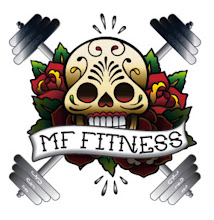Knees are the most commonly injured joints in the body. Considering that when you simply walk up stairs, the pressure across your knee joints is four times your body weight, it isn't surprising. Simple, everyday wear and tear can end up hurting your mobility. The largest and most complicated joint, the knee is used for everything from standing up, sitting, to walking, running, etc. It's a weight-bearing joint that straightens, bends, twists and rotates. All this motion increases your risk of acute or overuse knee injuries.
Acute knee injuries (including torn ligaments and torn cartilage) are often caused by twisting the knee or falling. Sports that involve running and jumping and sudden stopping and turning, such as soccer, basketball, volleyball, tennis, and baseball, as well as contact sports such as football, wrestling, and hockey increase the risk of an acute knee injury.
But more common than sudden knee injuries are injuries caused by overuse or overload.
But it’s not too late. Like a rusty door hinge, with care and maintenance, you knees can be trouble free. Even if you already experience problems, exercising the muscles surrounding the knee joints— Quadriceps (front of thigh), Hamstrings (back of thigh), Abductor (outside thigh), and Adductor (inside thigh)—will help make your knees stronger and less susceptible to injury. Exercise keeps your joints from stiffening and provides needed support, making movement easier and reducing pain.
Below are some great exercises, keep in mind low impact aerobics like swimming, elliptical machines, walking, and cycling are other great ways to tone up other muscles surrounding knees.
STRENGTH TRAINING
Wall slide: Leaning with your back against a wall, bend your knees 30°, sliding down the wall, then straighten up again. Move slowly and smoothly, using your hands on the wall for balance. Keep feet and legs parallel, and do not allow knees to go out over the toes. Repeat 5 -10 times.
Bent-Leg Raises: Sitting in a chair, straighten one leg in the air (without locking the knee). Hold for about one minute. Bend your knee to lower the leg about halfway to the floor. Hold for 30 seconds. Return to starting position. Work up to 4 reps on each leg.
Straight-Leg Raises: Sitting in a chair, rest your foot on another chair. Lift the foot a few inches off the chair while keeping your leg straight. Hold for 5 -10 seconds. Return to resting position. Repeat 5 -10 times. (Also work on increasing the time, up to 2-3 minutes if possible).
Abductor Raise: Lie on your side, propped on one elbow. The leg on the floor bent, the other straight. Slowly lift the top leg, hold for 5 -10 seconds, then lower. (Ankle weights will increase the intensity). Do 1-3 sets with 12-15 repetitions each. Remember to rest in between sets.
Hamstring Curl: Stand with the front of your thighs against a surface (a table or wall). Flex one knee up as far as is comfortable. Hold for 5 - 10 seconds, then lower slowly. If possible, do not touch the floor between repetitions. (Ankle weights will increase the intensity.) Do 1-3 sets with 12-15 repetitions each. Remember to rest in between sets.
Step-Ups: Stand in front of a step, like a sturdy bench or stairs, about two feet high (or less if necessary). Step up onto the support, straighten your knees fully (without locking them) and step down. Maintain a steady pace. If you are comfortable with your balance, pump your arms while doing this exercise. Start with 1 minute, slowly building your time. Gets your heart pumping too!
Stationary Bike: Biking is a good way to increase strength and range of motion. Make sure you have the right positioning of the legs. At the bottom of the pedal stroke, the bend in the knee should be 15 degrees. Start with 10 minutes and slowly increase your time.
Always check with your doctor before beginning an exercise program. These exercises are designed to help, not hurt. If you experience pain at any time during the exercise, stop. Pain is your body’s way of telling you that something is wrong. This type of pain is not to be confused with "the burn" when it gets real tough to complete exercises towards last reps of a set.
Depending on your fitness level or activity/mobility level, if you have increased soreness after doing these exercises, it may help to ice your knee or knees for 10 - 20 minutes. Place a bag of ice (or frozen vegetables) over the joint, with a towel between to protect the skin. Elevate your leg on a chair if ice alone is inadequate.
Remember the basics-- R.I.C.E. - Rest Ice Compress Elevate.
Subscribe to:
Post Comments (Atom)

Maria, this is Kathryn's friend Amber, I just hurt my knee and my doctor just recommended this weekend I start working on building my quadriceps and hamstrings to make life happier for my knee. I can't wait to try these exercises!
ReplyDelete